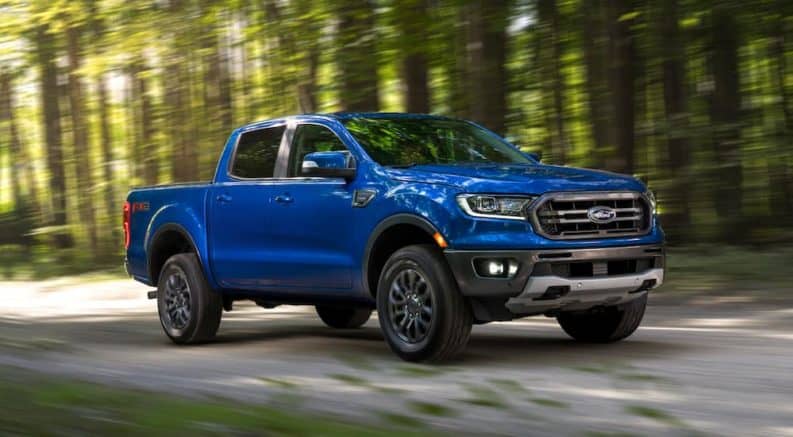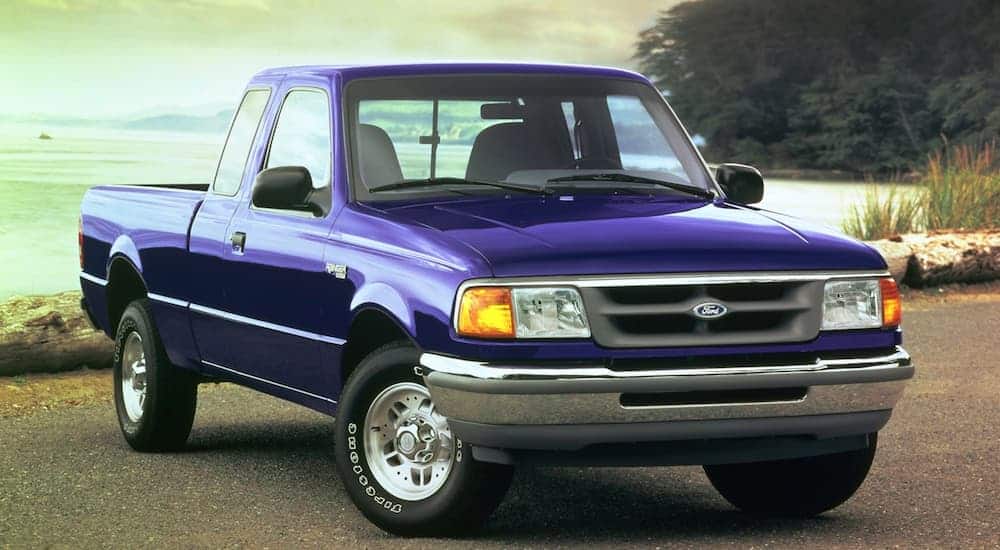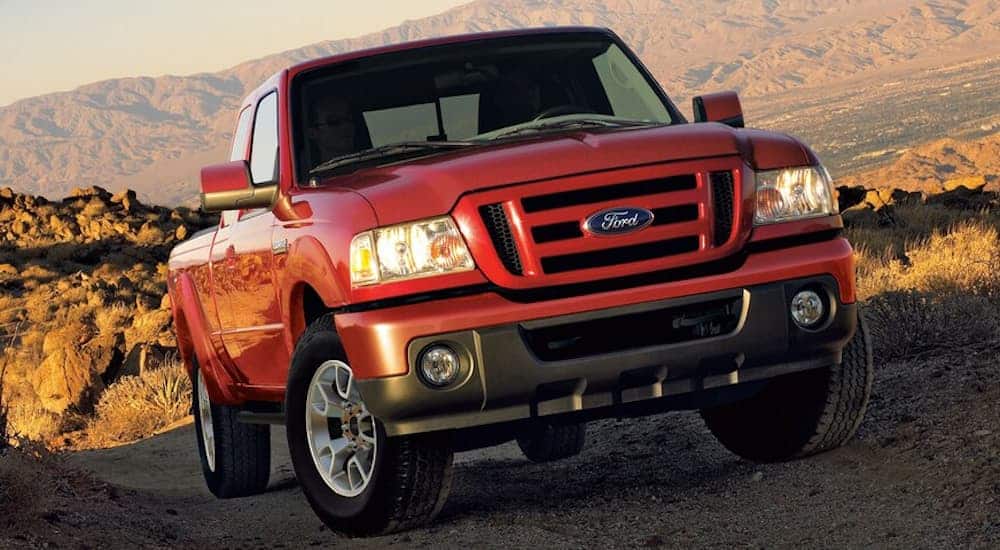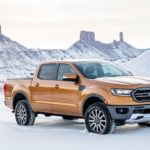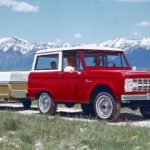Ford has managed to cultivate a household name over the last 100+ years. Gaining massive popularity for its trucks and SUVs, the American automaker has established credibility and brand trust for turning out reliable, tough models that are family-friendly and innovative. If you are looking for used Ford trucks, you can rest assured that these vehicles usually remain in good shape for many years, even decades, after their initial production dates. Take the Ford Ranger, for example. Produced in various forms since 1965, this truck has quite an interesting story to tell.
Small Beginnings
The very first Ford Ranger wasn’t actually a Ranger at all. The Ranger was initially a trim option on the Ford F-Series and Ford Bronco from 1965 until 1981. It was a mid to high-level trim that was so popular that it eventually became a compact truck.
The very first compact truck to be produced by Ford was known as the Courier. It came out in 1972 and was a collaboration with Mazda. In production until 1982, Ford decided to release its own compact truck model to avoid high taxes on vehicle imports.
The First Generation
The very first Ford Ranger was introduced to the market in 1982 in competition with the Chevrolet S-10. Even though it was much smaller than its older brother, the Ford F-Series, the Ranger models with 4×4 capabilities matched or even exceeded the F-100’s payload abilities with a maximum payload of 1,600 pounds. In fact, it was such a tough little truck that Ford borrowed its chassis, shortened it, and built the 1984 Bronco II.
The body-on-frame chassis design for the first-generation Ranger shared many characteristics with the F-Series chassis. It had a leaf-spring rear suspension and an independent front suspension made from high-strength steel as opposed to forged steel. This made the overall weight significantly less, which led to a better fuel economy without compromising strength.

Under the hood rested one of six different engines. Consumers had a choice between 2.0L and 2.3L I-4 engines, 2.8L, 2.9L, and 4.0L Ford Cologne V6 engines, a 3.0L Ford Vulcan V6 engine, or a few diesel variations. The output for these powertrains was between 73 and 140 hp. Rear-wheel-drive was the standard, but 4WD was an option. Most models came equipped with a four-speed manual transmission, but a 5-speed manual and 3-speed automatic were also available.
Comparing the Ranger to its older brother, the F-100, the Ranger was 11-inches narrower and 18-inches shorter. However, the Ranger kept several exterior styling elements from the F-100, including the grille design, headlights, taillights, and cab proportions. Up until the SuperCab body style was introduced, the Ranger could only hold up to three passengers on the bench-style front seat.
There were five trim levels on the first-generation Ranger. The base was called the S, and it featured easy-to-clean vinyl upholstery, halogen headlights, black foldaway side mirrors, and a tachometer on 4×4 versions. The Sport added the tachometer to 4×2 models as well, and it also came with power steering, an AM/FM stereo with a digital clock, a rear step for the bumper, and aluminum exterior accents. The XLS added sporty bucket seats and black exterior accents. The XLT offered chrome exterior accents, cloth upholstery, and a sliding rear window. Finally, the STX featured foglamps, sporty cast aluminum rims, and a handy floor console.
The Second Generation
In production from 1993 until 1997, the completely redesigned Ranger was unveiled with no shared elements to its predecessor or older sibling. It’s smaller, more aerodynamic body style featured a lower hoodlike, taller/wider doors, and body contour that really made this truck shine.
It came standard with a 2.3L inline-4 engine that generated 98 hp. The Vulcan V6 and Cologne V6 engine remained as options, but the standard transmission was officially upgraded to a 5-speed manual.
Available in four trim levels, the second generation model had better features. The XL kept its bench seat and vinyl upholstery. It also added tinted glass for privacy and steel rims for a stylish look. The XL Sport was ultimately the same as the XL with an added tape stripe for a more athletic look. The XLT upgraded the interior upholstery to cloth and added a floor console and full-faced steel wheels. It also came with an AM/FM stereo. The top-tier STX featured captain’s chairs covered in cloth, power steering, and a cassette player.
As a special edition model, the Ranger Splash was released in 1993. It has a lower suspension and a monochromatic exterior style with vinyl Splash decals on the sides and tailgate.
The Third Generation
The Ford Ranger underwent a major update from 1998 until 2012. Revisions to the suspension and steering mechanisms gave drivers a smoother ride, and a 25L I-4 engine gave a 6% boost in power. It generated 117 hp and 148 lb-ft of torque. In 2001, this 4-cylinder engine was replaced by a 4.0-liter V6 motor, and a 5-speed automatic transmission became the standard. This revision also included updates to the grille, hood, exterior lighting system, and front bumper.
By 2004, the Ranger got another facelift with enhancements to the grille, hood, and front bumper. Interior improvements were also made with the addition of bucket seats and a newly designed instrument cluster. Designers weren’t done yet. In 2006, this compact truck underwent another facelift, tweaking the grille again and adding larger side mirrors. By 2010, head and torso airbags were added to improve crash test ratings, and electronic stability control was also installed for a smoother driving experience.
The Current Generation
The Ford Ranger was benched for several years after its final third-generation production run. After radio silence for six years, Ford announced at the 2018 North American International Auto Show that it would be releasing the fourth generation of the Ranger. However, there was a slight change. The new Ranger would no longer be a compact truck. It would now be the company’s first-eve entry-level, mid-size truck.
The 2019 Ford Ranger is built for folks who want strength and utility, but don’t want a massive vehicle like the F-150. Available in three trim levels, all 2019 Ranger models are powered by a 2.3L Ecoboost engine that generates 270 hp and 310 lb-ft of torque.
This pickup truck is available as a SuperCab (4-seats) or SuperCrew (5-seats), and it has loads of advanced infotainment and safety features. Depending on the trim level (XL, XLT, and Lariat), these advanced features may include SYNC 3, blindspot monitoring, rear cross-traffic alert, pre-collision assist, lane-keeping assist, automatic emergency braking, and so much more. Some models can even be equipped with the FX4 Off-Road Package that includes upgraded tires, monotube shocks, and other updates that make heading off on an adventure more enjoyable. LED headlights, taillamps, and foglights may also be included.
The Ford Ranger has come a long way since its initial release. The early models are now collectible, while the newly released revamp is totally modernized. Whether you are a fan of the first generation or want to own your first Ford with the all-new model, the history of the Ford Ranger is quite interesting.

